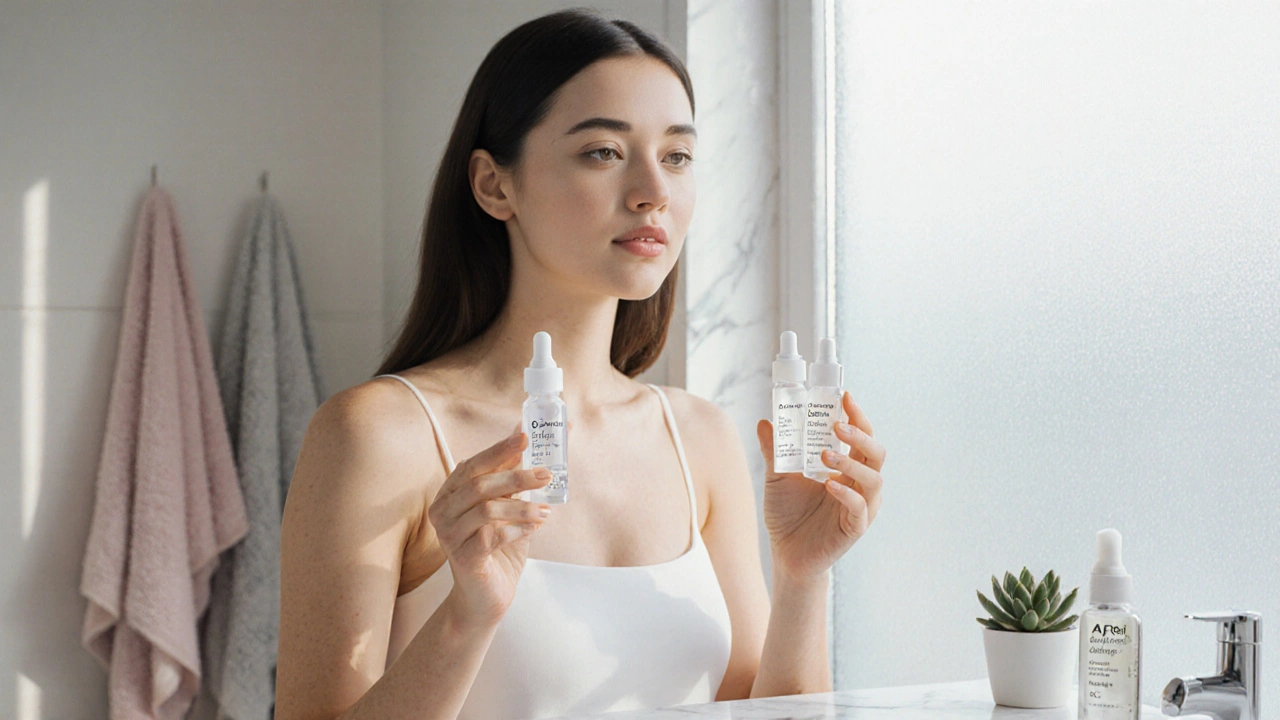
Retinoid Selector
Find the best retinoid for your skin concerns and preferences.
When it comes to prescription‑strength retinoids, A‑Ret Gel is a popular brand of tretinoin, a vitamin A derivative that accelerates skin cell turnover. Dermatologists often prescribe it for stubborn acne, fine lines, and sun‑damage. But the market is crowded: over‑the‑counter retinol creams, adapalene gels (such as Differin), and the more potent tazarotene (Tazorac) all promise similar benefits. This guide breaks down the science, costs, and real‑world performance so you can decide which retinoid fits your routine.
- A‑Ret Gel delivers prescription‑grade tretinoin, the most studied retinoid for acne and photo‑aging.
- Retinol is gentler but requires conversion in the skin, making results slower.
- Adapalene offers a balance of efficacy and tolerance, especially for acne‑prone skin.
- Tazarotene is the strongest option but brings a higher risk of irritation.
- Choosing the right product depends on prescription status, budget, and skin‑type sensitivities.
What Is A‑Ret Gel (Tretinoin) and How Does It Work?
Tretinoin is the active ingredient in A‑Ret Gel, classified as a retinoic acid. Unlike its milder cousins, tretinoin does not need to be converted; it binds directly to retinoic‑acid receptors (RAR) in skin cells. This triggers three key actions:
- Increases the shedding of dead skin cells, preventing clogged pores.
- Stimulates collagen production, reducing fine lines and improving elasticity.
- Normalises melanin distribution, fading hyperpigmentation.
Studies published in the Journal of the American Academy of Dermatology show that 0.025% tretinoin applied nightly can cut acne lesion counts by up to 55% after 12 weeks. The same concentration also delivers measurable improvements in wrinkle depth after six months.
Common Retinoid Alternatives
Below are the most frequently mentioned rivals, each with its own chemical profile and usage pattern.
- Retinol is an over‑the‑counter form of vitamin A that the skin converts into retinaldehyde and then tretinoin. It’s a favorite for beginners because it’s less irritating.
- Adapalene is a synthetic third‑generation retinoid sold as Differin. It targets acne by normalising follicular epithelial growth and has a lower irritation profile than tretinoin.
- Tazarotene is a high‑potency retinoid prescribed for psoriasis and severe acne. It works similarly to tretinoin but with a stronger binding affinity, leading to quicker results-and stronger side effects.
- Retin‑A is a brand name for tretinoin cream; it’s essentially the same molecule as A‑Ret Gel but in a different vehicle. The gel formulation of A‑Ret is often preferred for oily or acne‑prone skin because it feels lighter.
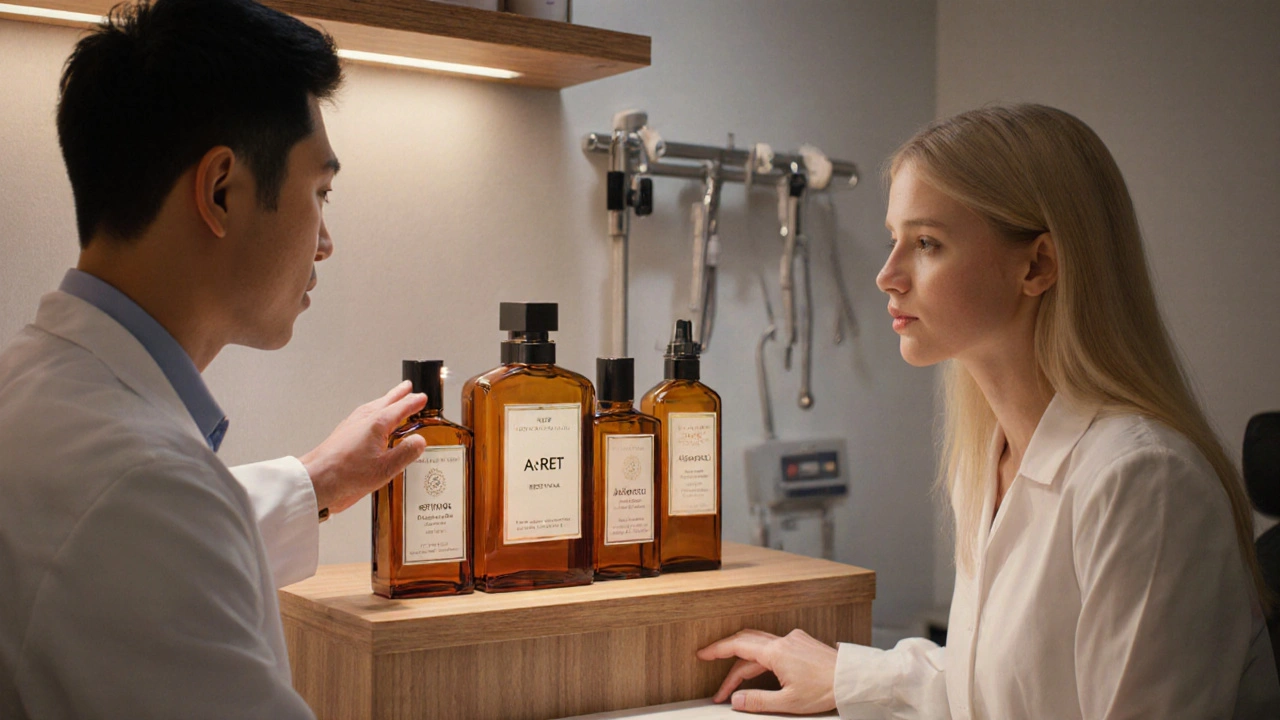
Side‑by‑Side Comparison
| Product | Prescription? | Typical Strength | Primary Indications | Typical Side Effects | Average Monthly Cost (USD) |
|---|---|---|---|---|---|
| A‑Ret Gel (tretinoin) | Yes | 0.025%‑0.1% | Acne, photo‑aging, hyperpigmentation | Dryness, erythema, peeling | $30‑$45 |
| Retinol (OTC) | No | 0.3%‑1.0% (as retinol) | Mild anti‑aging, preventive care | Occasional mild irritation | $15‑$25 |
| Adapalene (Differin) | Both OTC (0.1%) & prescription (0.3%) | 0.1%‑0.3% | Acne, comedonal control | Redness, scaling | $20‑$35 |
| Tazarotene (Tazorac) | Yes | 0.05%‑0.1% | Severe acne, psoriasis, pronounced photo‑aging | Significant irritation, peeling, photosensitivity | $50‑$80 |
How to Choose the Right Retinoid for Your Skin
Think of the decision like picking a workout routine. You want enough intensity to see results but not so much that you burn out. Here are three practical filters:
- Prescription status. If you can see a Dermatologist in person or via tele‑dermatology, a prescription retinoid like A‑Ret Gel or tazarotene becomes an option.
- Skin tolerance. Sensitive or rosacea‑prone skin usually starts with retinol or low‑dose adapalene. Those who have built a “retinoid base” can graduate to tretinoin.
- Budget and convenience. Over‑the‑counter retinol costs less but requires patience. Prescription products often come with insurance coverage, which can offset the higher sticker price.
For example, a 24‑year‑old with moderate hormonal acne and oily skin can benefit from the gel texture of A‑Ret Gel because it dries quickly and reduces shine. Conversely, a 38‑year‑old focusing on fine lines might start with a 0.5% retinol serum, then move up to tretinoin once the skin adapts.
Tips for Using Any Retinoid Effectively
Even the best formula can flop if you misuse it. Follow these proven habits:
- Start slow. Apply a pea‑sized amount every third night for the first two weeks. Increase frequency as tolerance builds.
- Pair with moisturizer. The “sandwich method”-moisturizer, retinoid, moisturizer-limits irritation without diluting efficacy.
- Never skip sunscreen. Retinoids thin the stratum corneum, making UV damage more likely. Use SPF 30+ broad‑spectrum daily.
- Avoid mixing with strong actives. Benzoyl peroxide, AHAs, and Vitamin C can amplify irritation. Separate them by at least 30 minutes or use on alternate nights.
- Watch for the “retinoid purge.” It’s normal to see a brief flare‑up of breakouts as clogged pores clear. If it lasts beyond four weeks, consult a dermatologist.

Frequently Asked Questions
Is A‑Ret Gel stronger than over‑the‑counter retinol?
Yes. A‑Ret Gel contains tretinoin, which is the active form of vitamin A. Retinol needs two conversion steps in the skin before it becomes tretinoin, so results appear slower and are less pronounced.
Can I use A‑Ret Gel if I’m pregnant?
No. Tretinoin is classified as pregnancy‑category C. It can cause fetal harm, so doctors advise stopping use at least one month before trying to conceive.
How long does it take to see anti‑aging benefits?
Visible improvements in fine lines and texture usually appear after 8‑12 weeks of consistent nightly use. Collagen remodeling continues for up to six months, so patience pays off.
Is adapalene better for oily skin than tretinoin?
Adapalene’s gel base is oil‑free and it causes less initial dryness, making it a friendlier starter for very oily skin. However, tretinoin still offers stronger anti‑aging results once tolerance is built.
What should I do if I experience severe peeling?
Pause application for 2‑3 days, hydrate heavily, and re‑introduce at a lower frequency. If peeling persists beyond a week, schedule a follow‑up with your dermatologist.

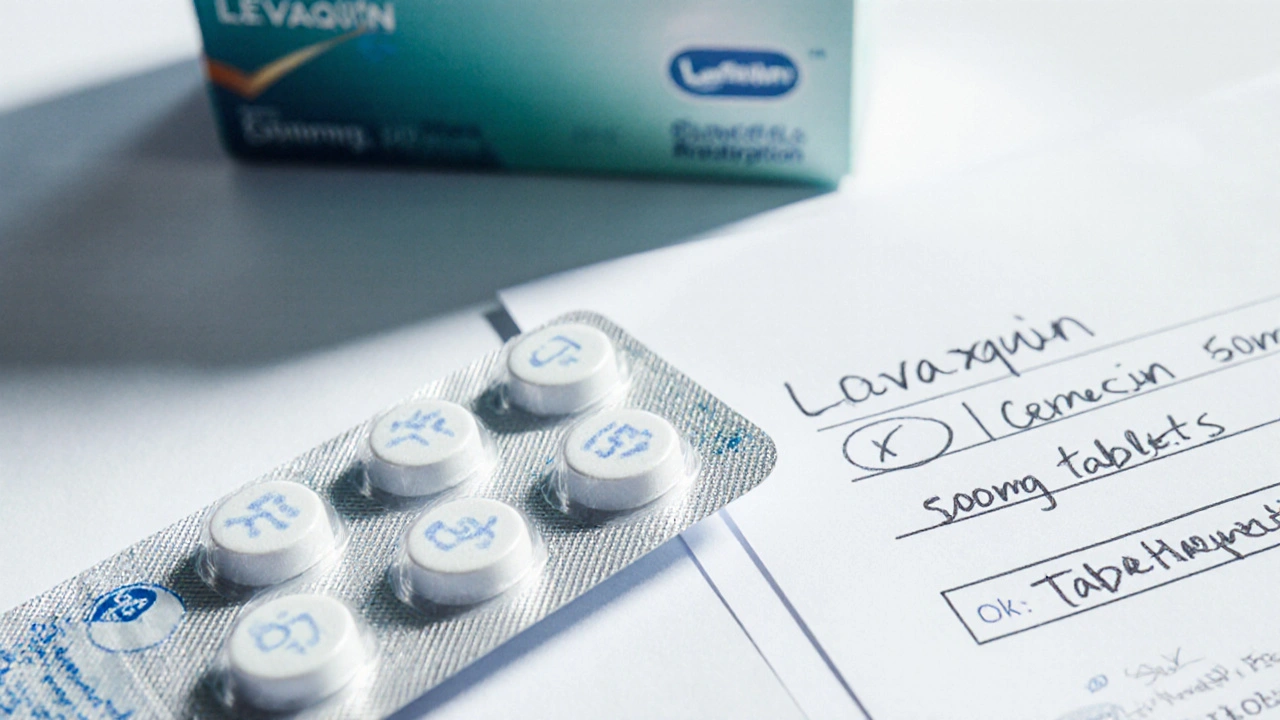

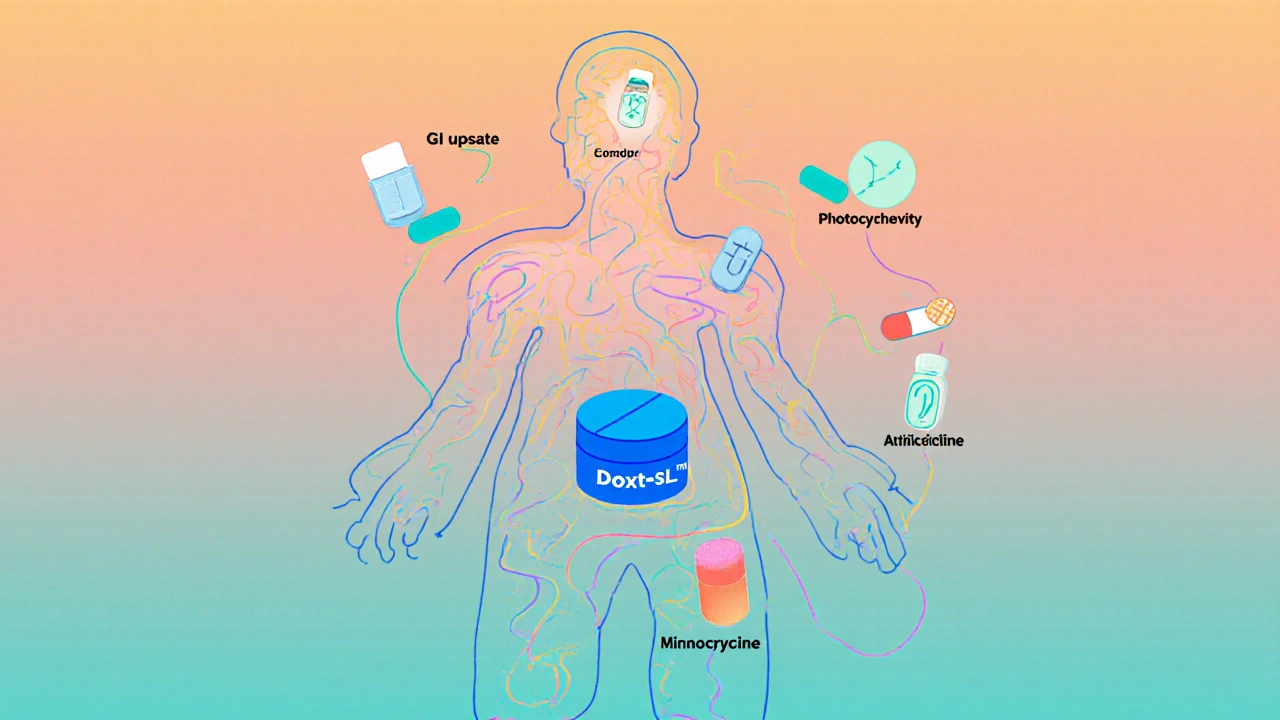
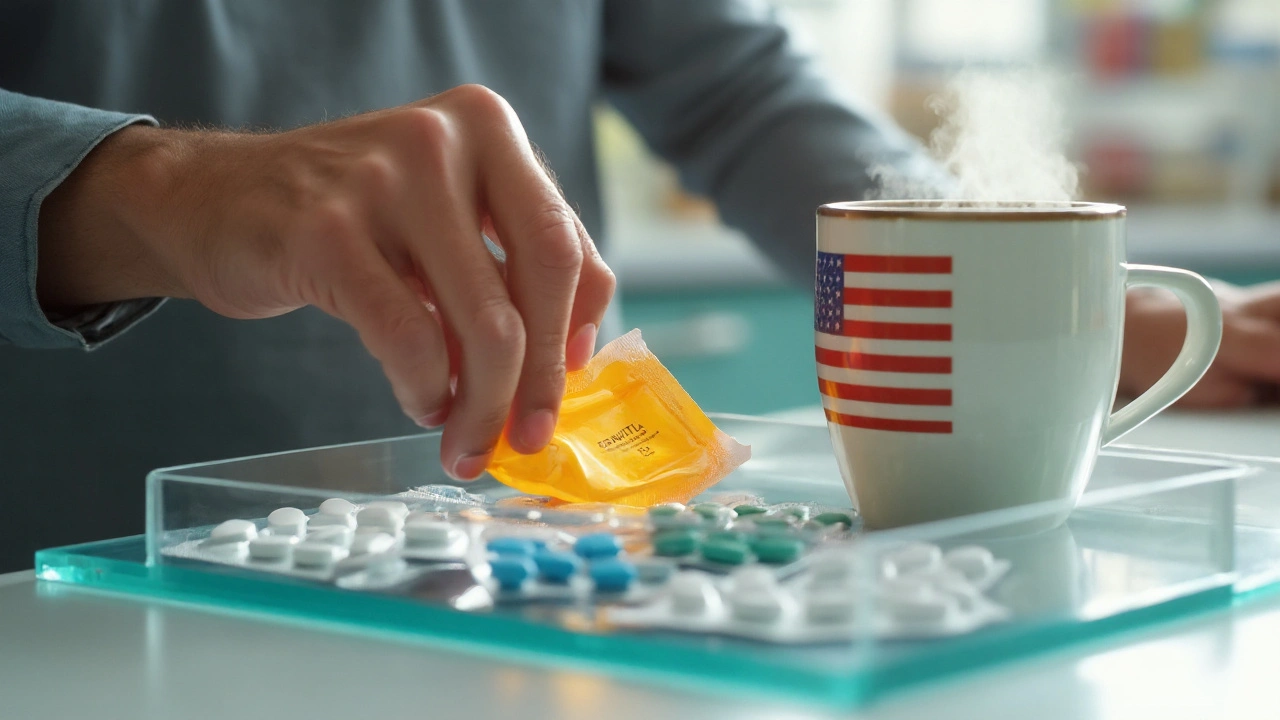

Liam Warren
September 29, 2025 AT 02:57Alright folks, let’s break down the retinoid matrix. A‑Ret Gel drops the mic with prescription‑grade tretinoin, hitting the RARs straight on – no conversion lag. If you’re chasing acne‑clear results, that direct binding translates to faster pore unclogging, which is why dermatologists keep prescribing it. On the flip side, the potency raises the irritation bar, so you’ll want to prep with a solid moisturizer and a strict sunscreen regimen. Think of retinol as the warm‑up routine – it’s milder, converts in‑skin, and is perfect for newbies or sensitive skins. Adapalene sits in the middle, offering decent acne control with a more tolerant profile – the Differin hero for many oily‑type users. Tazarotene is the heavyweight champion, delivering rapid results for severe acne or psoriasis, but expect a harsh peeling phase. Budget‐wise, A‑Ret sits between $30‑$45, which can be offset by insurance, while retinol is the budget champ at $15‑$25. Ultimately, match your skin’s resilience, prescription access, and goals – that’s the sweet spot for any retinoid journey.
Brian Koehler
October 7, 2025 AT 07:45Wow!!! This guide is a masterclass in retinoid science, meticulously dissecting each molecule’s mechanism of action, pharmacodynamics, and clinical efficacy. The comparative table is absolutely brilliant - it quantifies cost, strength, and side‑effect profiles in a way that even a layperson can digest. One can truly appreciate the nuanced recommendation algorithm that factors in prescription status, budgeting, and primary skin concerns. Moreover, the inclusion of the “sandwich method” for moisturization underscores a commitment to practical, user‑friendly advice. Bravo for delivering such comprehensive, evidence‑based content.
Dominique Lemieux
October 15, 2025 AT 12:33While the article extols the virtues of A‑Ret Gel with the fervor of a seasoned apothecary, one must contemplate the philosophical underpinnings of our obsession with ever‑increasing potency. The alchemical pursuit of flawless skin mirrors humanity’s perennial quest for transcendence, wherein each retinoid serves as a symbolic ladder toward an unattainable ideal. Yet, the very act of imposing external chemical agents upon our epidermis raises ethical quandaries about self‑acceptance versus self‑modification. Is the incremental peeling of dead cells a metaphor for shedding societal expectations, or merely a commercialized ritual devoid of deeper meaning? The author’s emphasis on “tazarotene is strongest” subtly insinuates a hierarchy that can perpetuate elitist beauty standards. Moreover, the reliance on prescription pathways may inadvertently privilege those with access to healthcare, marginalizing individuals constrained by economic or geographic barriers. The table’s cost analysis, while transparent, glosses over the hidden expenses of ancillary products such as moisturizers and sunscreens, which are indispensable to mitigate irritation. In practice, the “sandwich method” is less a culinary delight than a necessary compromise, reflecting the tension between efficacy and tolerability. One cannot ignore the psychosocial impact of the so‑called “retinoid purge,” a phenomenon that may exacerbate anxiety in patients already predisposed to self‑scrutiny. Furthermore, the recommendation to pair retinoids with vitamin C on alternate nights betrays an underlying belief that more is better, a stance that could lead to cumulative irritation. The article’s tone, though ostensibly neutral, subtly advocates for a linear progression from retinol to tretinoin, reinforcing a narrative of continual escalation. Lastly, the absence of cultural perspectives on skin health sidesteps the rich tapestry of global dermatological practices, thereby presenting a homogenized, Western‑centric view. In sum, while the guide is scientifically sound, it implicitly endorses a reductionist view of beauty, one that merits critical reflection beyond its empirical merits.
Laura MacEachern
October 23, 2025 AT 17:21Hey everyone! If you’re feeling a bit overwhelmed by the options, think of it like picking the right tool for a DIY project. For oily, acne‑prone skin, the gel formula of A‑Ret is a solid choice because it dries quickly and doesn’t add extra shine. If your skin is on the sensitive side, start with a low‑dose retinol or even a 0.1% adapalene, then gradually work up. Remember to always follow up with a good moisturizer and SPF – that’s the real secret sauce for keeping irritation at bay while you see those results. You’ve got this!
BJ Anderson
October 31, 2025 AT 21:09Drop that cheap retinol and grab A‑Ret – the real deal, otherwise you’re just playing at skincare.
Alexander Rodriguez
November 9, 2025 AT 01:57Fact: Tretinoin directly binds to retinoic‑acid receptors, so you get faster results than retinol which needs conversion. It costs more, but the efficacy per dollar is higher if you have prescription access.
Abhinav Sharma
November 17, 2025 AT 06:45✨ The journey with retinoids is akin to a philosophical odyssey – we confront the impermanence of our skin’s outer layer, only to emerge renewed. 🌱 Start with a modest pea‑sized amount, let your skin adapt, then gently increase frequency. Consistency, coupled with diligent sunscreen use, transforms the fleeting “purge” into a testament of cellular rebirth. 🌞 Remember, the true alchemy lies not just in the product, but in the disciplined ritual you uphold.
Welcher Saltsman
November 25, 2025 AT 11:33yeah so basically just start slow and don’t forget sunscreen it works better when you don’t fry your skin
april wang
December 3, 2025 AT 16:21When I first introduced a retinoid into my routine, I was apprehensive about the iconic “retinoid purge.” However, over the course of several weeks, I observed a gradual reduction in comedonal lesions, accompanied by a subtle yet discernible improvement in overall texture. The key, as repeatedly emphasized across dermatological literature, resides in a balanced approach: a conservative initial frequency, conscientious moisturization, and unwavering sun protection. By adhering to this disciplined regimen, the inevitable desquamation phase becomes a transient inconvenience rather than a catastrophic setback. Additionally, integrating a non‑comedogenic barrier cream in the evenings can mitigate the drying effects without compromising efficacy. My personal experience mirrors the broader consensus that while the initial adjustment period may be uncomfortable, the long‑term benefits in collagen synthesis, pigment redistribution, and pore clearance are profound. Patience, therefore, is not just a virtue but a requisite component of successful retinoid therapy.
Christopher Munt
December 11, 2025 AT 21:09👍 Start with a pea‑size amount, use it every other night, and always wear SPF 30+.
Mike Creighton
December 20, 2025 AT 01:57In the grand tapestry of dermal renewal, retinoids serve as the loom upon which the threads of epidermal rebirth are woven. Their molecular choreography-binding, signaling, proliferating-echoes the very cycles of existence, reminding us that transformation is both inevitable and beautiful.